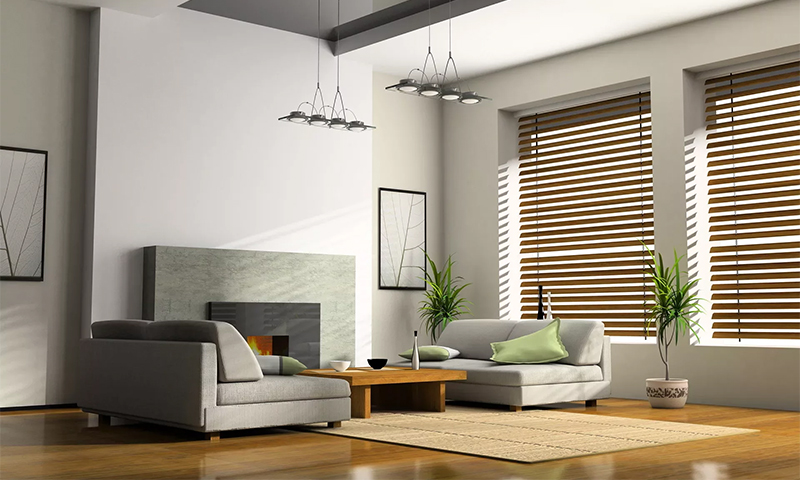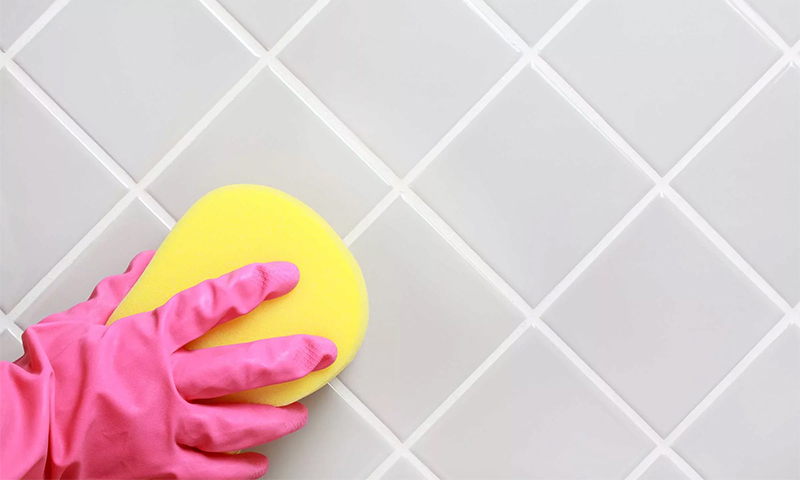Pasting the walls and ceiling with wallpaper is still the most popular and affordable option. But this material is already 4 thousand years old! But our people are not in a hurry to change it to more modern ways of finishing, mainly because of the simple and simple installation technology. Indeed, what could be easier: I came to the hardware store, bought rolls I liked in color and put them on the walls. That's just the fate of fresh repair depends on the correct choice of wallpaper.
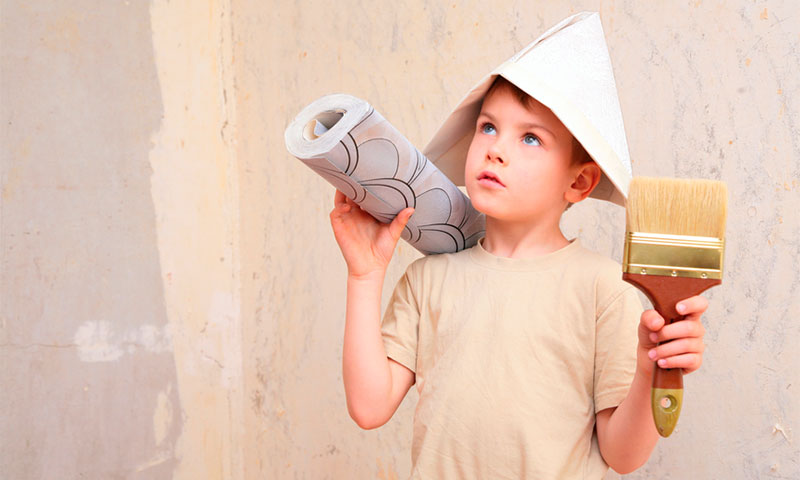
Content:
The best wallpaper manufacturers - which company to choose
Every year in the world millions of rolls of wallpaper are sold, striking a variety of drawings and textures. The products of the following companies are deservedly popular:
- Marburg wallcoverings
- Eco
- Arthouse
- Casadeco
- Omexco
European brands specialize in the production of luxury finishing materials on a thickened or fabric basis. Simpler models can be found in the rulers of foreign brands that have their own production facilities in our country (Rasch, Erismann). Also, good quality is offered by domestic factories, for example, “Palette” or “Beloboi”.
But the name on the label is not the only thing that will have to pay attention to when buying. You will also have to study the features of existing finishing materials, taking into account the conditions in which they will be used.
Types of wallpaper
Manufacturers do not stop experimenting with materials and their combinations in the manufacture of wallpaper. As a result, so many variegated tapestries appeared on the market that their eyes spread. All of them look beautiful, both in rolls and on walls, but their basic properties and durability may differ significantly.
Paper

Classics of the genre, which is too early to discount. Modern cellulose products are very different from their predecessors of the Soviet era attractive design and rich colors. Their manufacture does not use toxic paints or harmful impurities, so they are considered among the most environmentally friendly.
On sale there are 3 types of paper wallpaper, consisting of several layers of pressed paper:
1. simplex;
2. duplex;
3. triplex.
Multi-layered versions have greater strength and thickness, which allows you to hide small irregularities of walls under the canvases. The fragility and impracticality of the pulp is more than adequate for a very affordable price - repairs can be made without serious damage to the budget.
Pasting paper wallpaper in the nursery, do not have to drink valerian, finding another masterpiece on the wall with felt-tip pens or a bas-relief of clay.
Pros:
- Affordable price;
- Huge assortment;
- Environmental friendliness and safety;
- Warm and pleasant to the touch surface;
- Ease of sticking.
Minuses:
- Low light and moisture resistance;
- Short service life (no more than 5 years).
Vinyl
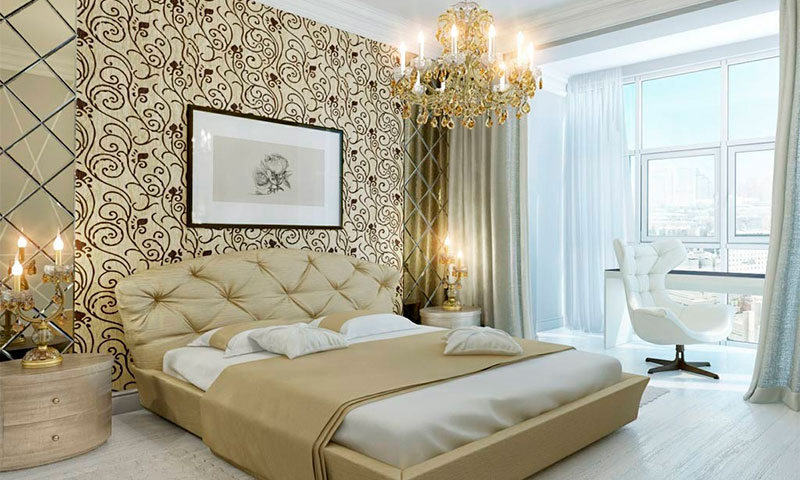
Represent a two-layer cloth of polyvinyl chloride, deposited on a paper substrate. On the one hand, such a material has sufficient elasticity, on the other - excellent tensile strength. Vinyl wallpapers today are most popular with buyers, so many manufacturers are focusing on them.
There are several technologies for the production of such tapestries, because of which different subtypes of vinyl coatings appeared:
- Foamed - soft to the touch, with the texture of decorative plaster;
- Washable - very dense, with a moisture-proof top layer;
- Compact vinyl is the most durable and durable wallpaper in this family.
Separately, it is worth mentioning silk-screen printing - a special kind of hot-embossed vinyl wallpaper, decorated with silk threads. The latter give the trellis a beautiful shine and high strength with relatively low density.
Pros:
- Average price;
- High strength;
- Good light fastness;
- You can wash with a sponge and even a brush;
- Hides irregularities and minor defects of the walls;
- Very large selection.
Minuses:
- Poor breathability;
- Low environmental friendliness.
Some types of luxury vinyl wallpaper have micropores in the upper layer, allowing the trellis to "breathe." But this is already a finishing of a higher price category, and in our market, it still occurs infrequently.
Flizelinovye

Valued for their incredible strength and durability, but they are much more expensive than vinyl. Here, 70% is pressed paper and only 30% are synthetic adhesives, which makes non-woven wallpapers relatively environmentally friendly.
The standard width of such tapestries is 1 m; many series allow surface coloring, which greatly expands the possibilities of room design. Also among the rulers of non-woven there are exclusive models, hand-painted.
Recently, another interesting subtype of such wallpaper has appeared - metallized trellis with the thinnest aluminum layer on the surface. The resulting coating looks just cosmically, while it has sufficient moisture resistance.
Pros:
- Good breathability;
- Durability and fire resistance;
- Not deformed and not torn in the process of sticking;
- Environmental friendliness;
- The possibility of staining in some models;
- Easy gluing and good adhesion to any bases (concrete, drywall, wood, chipboard);
- No problem removed from the wall.
Minuses:
- Without a protective layer of vinyl or paint unstable to moisture;
- Not cheap;
- Working with meter rolls is inconvenient.
Fiberglass for painting
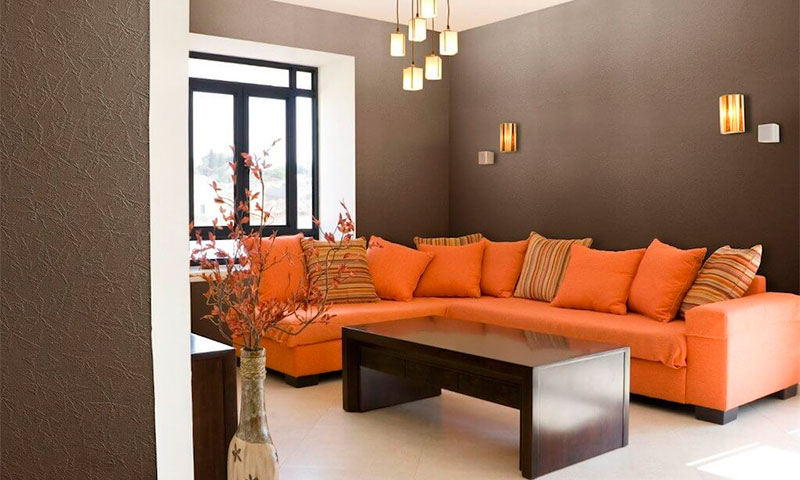
They are monochromatic snow-white trellis (smooth or corrugated) on a paper, vinyl or non-woven base. Adding reinforcing fiberglass to their composition gives them particular strength and resistance to abrasion.
Such a wall covering can be repainted up to 5 times, washed and even brushed. This is a great solution for creating an original designer interior, when it is very difficult to find the desired shade of the walls or you want to add some kind of zest.
Pros:
- Resistant to mechanical damage;
- Non-flammable and non-toxic;
- Hypoallergenic and "breathing";
- Allow multiple repainting;
- Strengthen the surface of the walls, preventing the cracking of the plaster.
Minuses:
- Deprived of expressive decorative elements;
- When pruning give abrasive dust, as from glass wool.
Textile

Chic fabric lanes are made on paper or non-woven base. On the basis of the glue, fine fibers of silk, velor, felt or flax are sprayed on the production. The result is an eco-friendly and luxurious wall decor.
Pros:
- Excellent breathability;
- Do not contain toxic and harmful substances to health;
- Keep their shape after the sticker;
- Can be varnished or painted;
- Do not require special gluing skills;
- Easily removed from the walls.
Minuses:
- Very expensive;
- They accumulate dust and do not tolerate wet cleaning;
- Textile spraying is easy to damage.
Eco wallpaper

Asian producers supply the Russian market with exotic natural wallpapers of rice, cane, bamboo, grasses and algae on paper or non-woven base for our country. They give the house a unique flavor, are absolutely safe for health and even have healing properties. However, deciding to decorate your house with such a wonder will have to fork out.
Pros:
- Made from natural and environmentally friendly materials;
- They have good heat and sound insulation;
- Completely hide the defects of the walls;
- Unrecognizable transform the room;
- Some have bactericidal properties.
Minuses:
- Visible joints between the canvases;
- When sticking require experience and patience;
- Heavy;
- May require additional varnish coating.
Wallpaper selection options

Resistance to external factors
Under the resistance of the wallpaper usually implies their resistance to wet cleaning, sunlight and abrasion. The first criterion is especially important for the kitchen, bathroom, nursery or any other room in which the decoration is exposed to wet steam or simply requires frequent washing. The waterproof coating also protects the walls from dampness, which means from the appearance of fungus and mold.
Here you can distinguish 3 degrees of wallpaper durability (on the label in a roll, they are indicated by the corresponding number of long wavy lines):
1. Waterproof can be wiped with a damp cloth, but without fanaticism;
2. Washable - allow cleaning with a soft brush with non-aggressive chemicals;
3. Super washable - even intensive cleaning.
Lightfastness is taken into account when choosing wallpaper in a room whose windows face the sunny side. If you do not plan to hide from the bright rays behind the dense blinds, pay attention to the corresponding icons on the roll.
The level of color resistance of the trellis to UV rays without loss of brightness of color is indicated by the image in the form of the sun:
- Half - satisfactory lightfastness;
- The whole sun is good;
- With a plus sign inside - very good;
- 2 suns - great.
The purchase of wear-resistant wallpaper in the first place should think about young parents and pet owners. Special anti-vandal trellis will adequately transfer the acquaintance with a naughty baby, as well as the claws, fangs and beaks of pets.
Only fiberglass wall covering has such properties - it’s not for nothing that manufacturers guarantee the 30-year service of their products. Learn anti-vandal wallpaper can be on the image of a hammer on the icon.
Relief
Relief wallpaper, as opposed to smooth, will help to hide small irregularities and defects of the walls, because they do not require pre-putty of the main surface. Embossing can be applied to any basic base: paper, vinyl, non-woven fabric - cold or hot.
Manufacturers offer many models of this kind of trellis, including super-realistic coatings with a 3D image or simply imitation of finishing materials (brickwork, wood, etc.).
A special symbol in the form of a creeping worm on the label will indicate the embossed pattern. But remember that the wallpaper with a convex pattern will accumulate dust, so that they are also required resistance to cleaning.
The need to select a picture
An important point for those who are short of money and can not afford to buy an extra roll in reserve. About 50% of all wallpapers produced in the world are monochromatic or have a non-expressed pattern. Such products can be glued freely without fitting, reducing waste.
When sticking wallpaper with a large pattern consumes a greater amount of material, so they should be taken with a margin. Docking may require up to 1 m of trimming per strip, but if the pattern is repeated often enough, there will be less waste.
Roll width and length
Standard roll widths are 53, 70 and 106 cm.
The second option is more often used by European manufacturers, while our costs are first and third cost.
Half-meter wallpaper is easier to glue over small rooms or rooms with a lot of windows and doorways.
Meter coverings are more suitable for spacious apartments with solid walls, as well as for ceilings, where you need to minimize the number of joints.
Flizelinovye panels are produced in the meter format, and paper because of its low density only in half a meter.
The length of the tapestry in the roll is also regulated:
- 10 m - the most common size;
- 15 m - standard for vinyl;
- 25 m - often used in the manufacture of non-woven products and wallpaper for painting.
By multiplying the width by the length, you will get an area that can be pasted over with one roll (with correction for the fit of the picture). After that, it will be easier to determine the number of wallpapers for each room.
What wallpaper to choose for different rooms
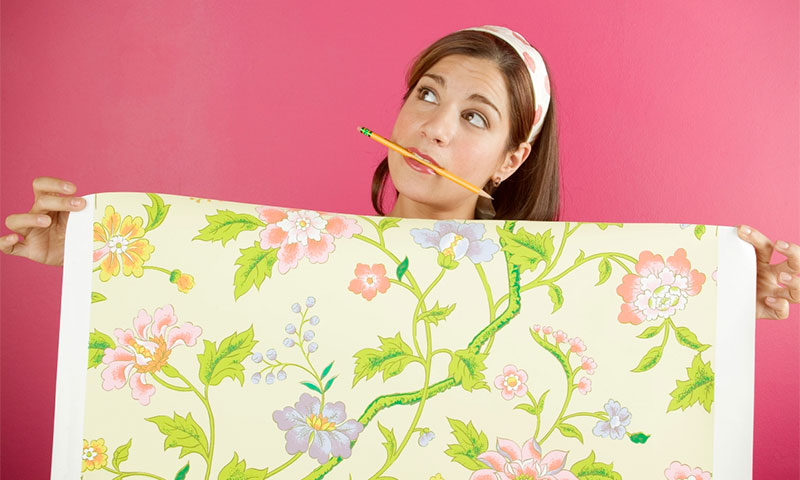
First you need to remember a few rules for selecting the color of the wallpaper, depending on the location and size of the room:
- Visually enlarge a small room will help the trellis of light colors with a rare and small print.
- The vertical bar “raises” the ceiling, and the horizontal bar visually expands the room.
- Dark colors and large pattern will reduce and make an unnecessarily spacious room more comfortable.
If the windows of your room overlook the sunny side - choose wallpaper of cold tones (green, blue, gray, purple), warm colors with a yellow and red subtone will “warm” the room oriented to the North or West.
Now you can go directly to the choice of finishes for every corner of the apartment.
In the hallway
This nedokomnata sees street dirt and dust more than others. At the same time, she meets guests and hosts as soon as they cross the threshold of the house. Accordingly, the decorative decoration of the hallway should be beautiful, create a feeling of comfort and give in to cleaning well.
Best of all smooth vinyl or glass wall-paper for painting will cope with the task. Just choose a non-dirty small pattern and discard monophonic models, so that random spots and damage do not catch the eye.
For kitchen and bathroom
Here the wallpaper has to withstand constant humidity and temperature changes. In addition, even a powerful kitchen hood does not guarantee 100% protection of walls against grease and paraffin soot, which means that you will wash them often.
The main requirement for wall covering in such conditions is slaughter moisture resistance and resistance to abrasive loads. These criteria are fully met by a sleek supermarket and compact vinyl, as well as glass wall covering for painting on PVC base. However, individual inserts from bamboo will also calmly survive the neighborhood with water and hot steam.
In the living room
Here, the wallpaper should “make an impression”: ideally fit into the interior and have a spectacular appearance.
In the living room you can glue any tapestries, but will look especially successful:
- embossed paper duplex;
- foamed vinyl;
- silk screen printing;
- elite interlining;
- fabric models.
Metallic coatings will give a special charm to the apartments, if you prefer the high-tech style, or expensive eco-wallpaper made of natural materials.
To the bedroom
In this room you should not choose the finishing of bright colors, otherwise you will not be able to relax and rest properly. Another important criterion for the choice of wallpaper for the bedroom is their environmental friendliness and breathability - this will help create a healthy microclimate in the room.
The task will cope with paper coatings, cellulose-based interlining, and cozy textiles. If the budget allows, decorate the bedroom with unusual eco-wallpapers made of sisal, seaweed or jute.
In the nursery
Finishing materials are selected with great care. The main requirement for children's wallpaper: security and pretty, but not flashy colors. Remember that a small tenant can not only draw and tear lanes, but also taste them. Therefore, when buying, pay attention to the manufacturer: it is better to overpay for a proven brand than to take the "cat in the bag."
If the child is still quite small, it makes no sense to buy expensive wallpaper, then to scold the child for the wall "painting" or stripped relief pattern. Just glue on beautiful and eco-friendly paper wallpapers that can be changed at least every year without much damage to the family wallet. But the student already quite fit vinyl or flizelin - they are well molded cool posters.
How much are the wallpaper
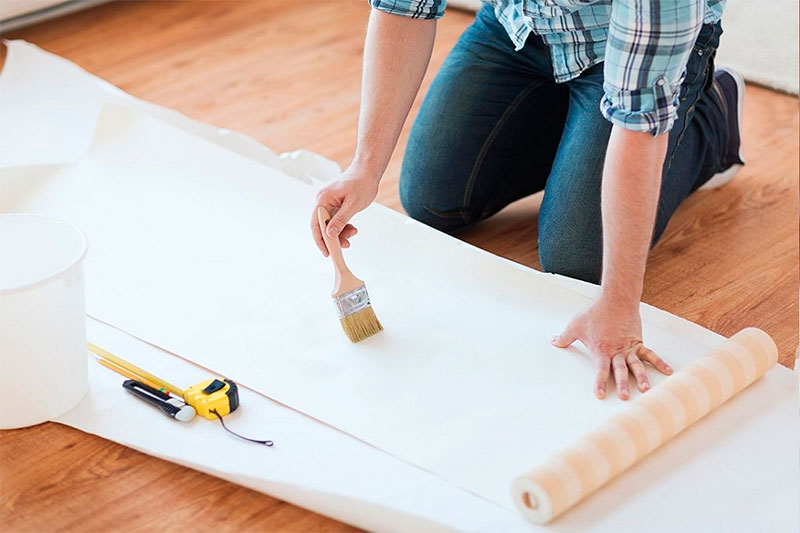
1. The thinnest paper wallpaper simplex can be bought from 100 rubles. per roll, prices for duplex and triplex start from 250. Products of European brands are sold from 500 rubles. for a roll. Baby can be bought for 300-400 rubles and above.
2. Vinyl wallpaper will come not cheaper than 300-500 rubles, if you choose a domestic manufacturer, and from 600 to 10 thousand rubles. for overseas brand. For silk-screen printing will have to lay out at least 1000.
3. Flizeline lanes on a paper basis will cost about 3,500–5,000 rubles, clean flizelin can be found for 300, and for 30,000 - it all depends on the manufacturer.
4. Each roll of glass fiber will reduce your budget by 1000 rubles.
5. The run-up of prices for textile cloths ranges from 1 to 20 thousand rubles, depending on the type of coverage and brand promotion.
6. Prices for eco-wallpaper directly depend on the material of their production. A jute roll costs 4,500–7,500 rubles, a grass product of at least 2,500, a leaf trim will draw 6–12 thousand, and at least 750 rubles will have to be paid per square meter of bamboo.
It will be interesting to friends too


